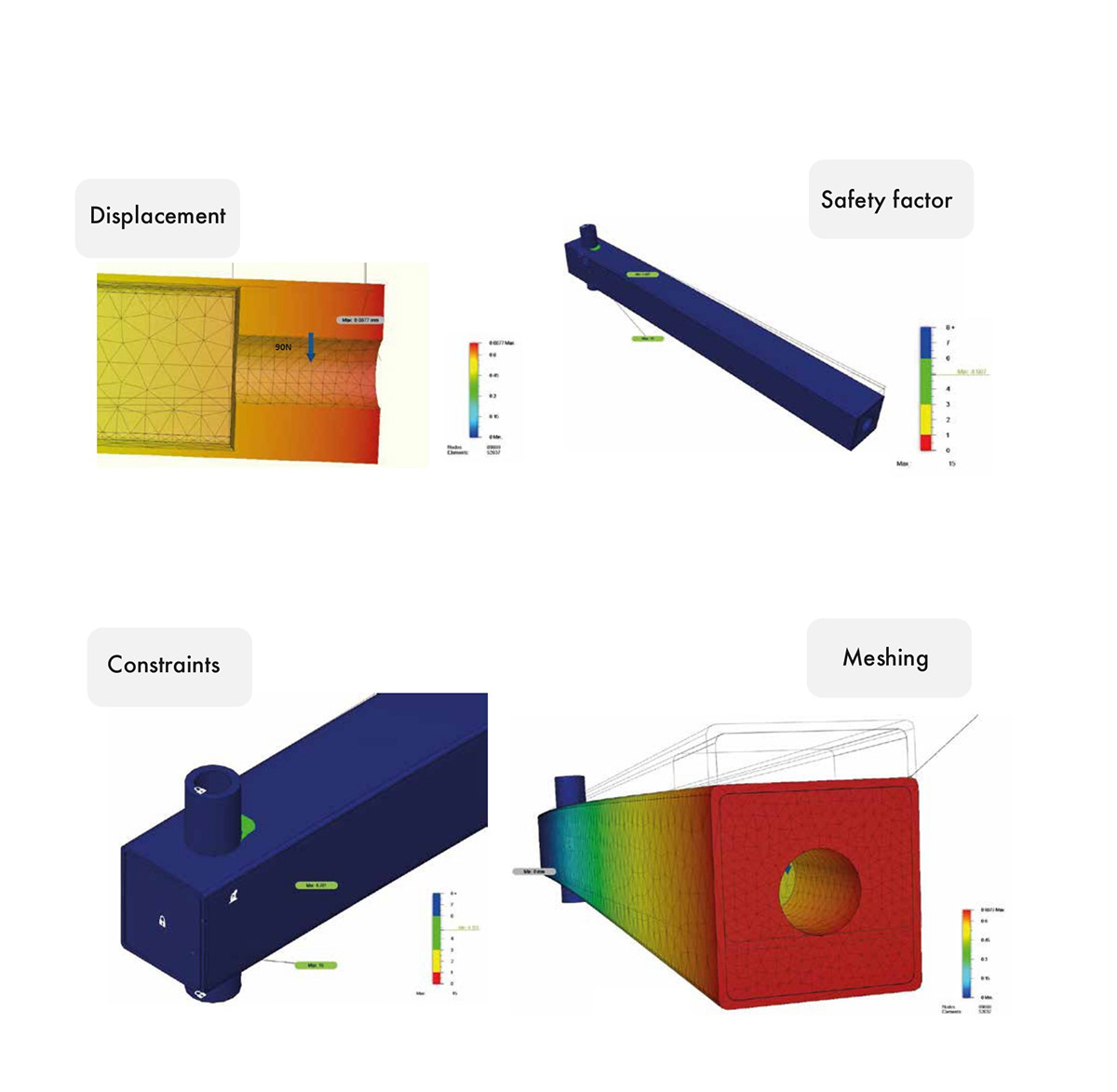Brief
Analyse the existing stabiliser arm and redesign it with the aim of increasing its stiffness and reflect manufacturing capabilities of the workshops at London South Bank University.
AIM93 is a collective team at London South Bank University with the goal of building the fastest human powered vehicle in the world and participate at the competition which takes place every year in Nevada, USA.



Analysis phase 1
Physical analysis and calculations; I used the existing CAD model of the HPV to extract the main dimensions of the stabiliser. I then calculated the reaction forces onto the stabiliser arm

Analysis phase 2
Using Fusion 360 I simulated the reaction forces calculated previously onto the existing stabiliser. The two results I was looking at was the displacement and the safety factor.

Ideation - Generative Design

Ideation and analysis of generative design results
I used generative design to leverage the pool of results and combination of different design outcomes the computer could give me. Most of the design outcomes resulted were complex structures which required multi axis machining which would bring up the cost of the part. I choose not to limit the results but used the multitude of suggestions to achieve a result whose design could be replicated in a more simpler shape without the need of multi axis machining. I ended up noticing that in most designs the cross section of the stabiliser was very similar to an I beam.
There was a need for a denser central section and to satisfy the manufacturing capabilities of the brief, an oval sectional shape would be a good alternative to test.

New Design and manufacture
The main body of the stabiliser can be made with the help of a mold machined out of aluminium blocks with the exact negative shape of the half cross section of the stabiliser.
The procedure requires first applying a layer of mold release wax onto the mold. For the carbon fibre is preferred using 2x2 twill weave sheets as they mold better around round edges. There is a need of around 10 layers for the thinnest side and 21 layers for the thicker one. Once the two molds are ready, epoxy tooling gel coat needs to be applied as a hardenere. Consequently a pipe of diameter of 21mm is placed in between the two parts and pressed together gradually and cured for 24 hours.

FEA on new design

Analysis of results
Displacement in the old stabiliser is 0.687mm while the new design presents a displacement of only 0.13mm. The redesign satisfies the brief.
